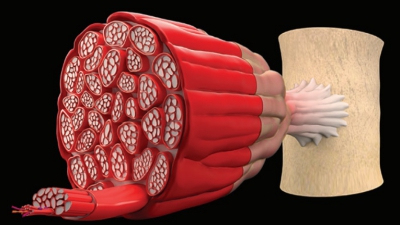Effects of Aging on the Joints
| Home | | Anatomy and Physiology | | Anatomy and Physiology Health Education (APHE) |Chapter: Anatomy and Physiology for Health Professionals: Support and Movement: Articulations
Aging takes a heavy toll on the body’s joints. Conditions such as arthritis and rheumatism are among the most prevalent complaints of elderly people.
Effects of
Aging on the Joints
Aging takes a heavy toll on the
body’s joints. Conditions such as arthritis and rheumatism are among the most
prevalent complaints of elderly people. These conditions involve pain and
stiffness in the joints, which may lead to immobility. Causes of arthritis
include bacterial or viral infections, joint injuries, severe physical stress,
and metabolic conditions.
Arthritis
Arthritis is a term that signifies more
than 100 inflammatory or degenerative
diseases, all of which damage the joints. Arthritis is the most common disease
that results in crippling of movement in the United States, affecting one in
five people. Acute arthritis usually develops from bacterial infections,
whereas chronic arthritis includes the forms known as osteoarthritis, rheumatoid
arthritis, and gouty arthritis. Rheumatoid arthritis is an autoimmune disorder that
primarily affects the small joints of the hands, causing pain, stiffness, and
deformity (FIGURE 8 -11 ). Gouty arthritis, known also as gout, is caused by accumulation of uric acid and primarily affects
the joints of the great toe, but can also involve the joints of the fingers (FIGURE 8-12), wrists, knees, and ankles. It is much more common in men over
the age of 30.


Gouty Arthritis
Gouty arthritis is a condition based on
excessive, abnormal levels of uric
acid deposited as needle-like urate crystals in soft tissues of joints. An
inflamma-tory response is triggered and an extremely painful gouty arthritis
occurs. Usually, the joint at the base of the great toe is first affected (FIGURE 8-13). Men
experience gouty arthritis much more than women because of their naturally
higher blood levels of uric acid. The condition may be genetically linked and
often runs in families. If untreated, the articulating bone ends fuse to
immobilize the joint. Medications include nonsteroidal anti-inflammatory drugs,
col-chicine, glucosteroids, and others. Dietary changes include increased water
intake, avoiding alcoholic beverages, and avoiding foods such as kidneys,
liver, or sardines, which are high in purine-containing nucleic acids.

Osteoarthritis
Osteoarthritis is the most common chronic form
of arthritis. Degeneration of joints,
via enzymatic activity occurs due to aging in most patients (FIGURE 8-14). Degenerative joint disease occurs more commonly in women, usually
affecting the knees and other weight-bearing joints and the distal finger
joints. Nearly half of all adults develop osteoarthritis by age 85, and women
are more commonly affected than men. In peo-ple with osteoarthritis, more
cartilage is destroyed than can be normally replaced. Poorly aligned or
overused joints are most likely to evelop osteoarthritis. Exposed bone tissue
becomes thicker over time, forming bony osteophytes (spurs). These enlarge bone
ends, restrict-ing joint movement. Affected joints may “crunch,” a condition
known as crepitus. Most commonly, the
joints of the cervical or lumbar spine, fingers, knuckles, knees, and hips are
affected. Osteoarthritis develops slowly, is irreversible, and causes pain,
joint stiffness, and inflam-mation. Treatments include pain relievers,
moder-ate activity, capsaicin, and nutritional supplements.

Continuous passive motion helps an injured joint to repair by improving circulation of synovial fluid. This is often
performed by a machine or physical therapist working with the patient.
Rheumatoid Arthritis
Rheumatoid arthritis is a
chronic inflammatory disorder that usually appears between the ages of 30 and
50. It is less common than osteoarthritis and affects women three times more
often than men. Initially, joint tender-ness and stiffness are common. It
usually manifests in the fingers, wrists, ankles, and feet, on a bilateral
basis. All of the rheumatic diseases that affect synovial joints are known as
rheumatoid arthritis; which is marked by exacerbations and remissions. These
may include anemia, muscle weakness, osteoporosis, and cardiovascular
abnormalities. Rheumatoid arthritis is an autoimmune disease, in which the
immune system attacks its own tissues. Although cause is not completely
understood, it may be related to various bacteria and viruses. The synovitis
(synovial membrane) of an affected joint becomes inflamed first Lymphocytes,
macrophages, and other inflammatory cells move to the joint cavity and release
inflammatory chemicals. Over time, a pannus
develops, which is a thickened, abnormal tissue that grasps to articular
cartilages. The pannus erodes cartilage and bone, forming scar tissue and
connecting bone ends together. When this scar tissue ossifies and the bone ends
fuse, the joint becomes immobile. Ankylosis
is the “end” condition, in which the affected areas become bent and deformed.
Although ankylosis does not always develop, rheumatoid arthritis consistently
results in restricted joint movement and intense pain. Treatment is aimed at
disrupting the autoimmune destruction of the joints. Medications include
steroidal and nonsteroidal anti-inflammatory drugs, immune suppressants, and
biologic agents. Surgery may be used to replace affected joints with artificial
prostheses.
Bursitis
Bursitis is inflammation of the bursae, which is often caused by trauma or
friction. Examples of bursitis include conditions known as water on the knee and student’s
elbow. If severe, common treatments include injection of anti-inflammatory drugs into the bursae or removal of
excessive fluid via needle aspiration.
Tendonitis
Tendonitis is inflammation of tendon
sheaths, which is usually caused by
excessive wear. This condition has similar symptoms to bursitis, which include
pain and swelling. Treatment of tendonitis includes ice, rest, and
anti-inflammatory drugs.
Lyme Disease
Lyme disease may also affect the joints and is caused by spirochete
bacteria. It is transmitted by ticks that infest deer or mice. Lyme disease may
cause joint (often knee) pain, arthritis, skin rash, flu-like symptoms, and
impaired cognition. Untreated Lyme disease results in neurological and
cardiovascular problems. It is very difficult to diagnose and usually requires
a long course of antibiotics.
Related Topics



